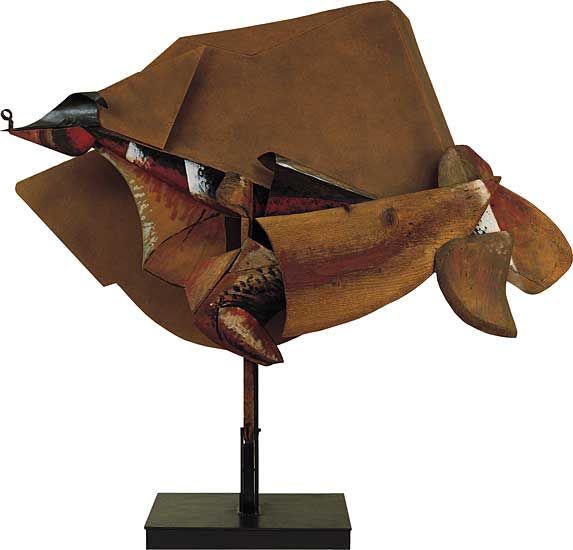Umberto Boccioni Gallery
Umberto Boccioni turned to sculpture in 1912 after publishing his manifesto on the subject on April 11 of that year. The Futurist aesthetic platform as articulated in this document advocates the use of various materials in a single work, the rejection of closed form, and the suggestion of the interpenetration of form and the environment through the device of intersecting planes. In Dynamism of a Speeding Horse + Houses Boccioni assembled wood, cardboard, and metal, with painted areas showing a Futurist handling of planes influenced by the Cubism [more] of Pablo Picasso and Georges Braque. Ironically, his intention of preserving “unique forms” caught in space and time is mocked by the perishability of his materials—the work has been considerably restored and continues to present conservation problems.
Boccioni, like Raymond Duchamp-Villon, made studies of horses from nature before developing the motif into a nonspecific symbol of the modern age. This fully evolved symbol appears in Boccioni’s painting The City Rises of 1910 (Collection The Museum of Modern Art, New York). In Dynamism of a Speeding Horse + Houses he used the horse to demonstrate his observation that the nature of vision produces the illusion of a fusing of forms. When the distance between a galloping horse and a stationary house is visually imperceptible, horse and house appear to merge into a single changing form. Sculptures such as the present example are concerned with the apparent compression of space as an object traverses it, and with the nature of the object’s redefinition by that space.
In 1913 and 1914 Boccioni made many drawings and watercolors related to the present work that explore the relationship between a galloping horse and a group of houses in close proximity. In some of these studies the speed of the horse’s motion serves to dissolve the legs below the muscles of the shanks. Boccioni’s original conception of the sculpture gave forceful expression to this concept.
Lucy Flint

viewer |
|
|
Dynamism of a Speeding Horse |
| Euro coin |
| Antigraceful |
| Noises of the Street |
| City Rises |
| Soccer Player |
| Muscular Dynamism |
Biography
Bulletin Board
Renowned Art
(home)
Umberto Boccioni was an Italian painter and sculptor and a member of the futurist movement. His 1913 futurist bronze sculpture, Unique Forms of Continuity in Space, is reproduced on the Italian 0.20 Euro coin.
all artists, with thumbnails: by birth year | alphabetically
all artists: by birth year | alphabetically
artists born in the 13th 14th 15th 16th 17th 18th 19th 20th century